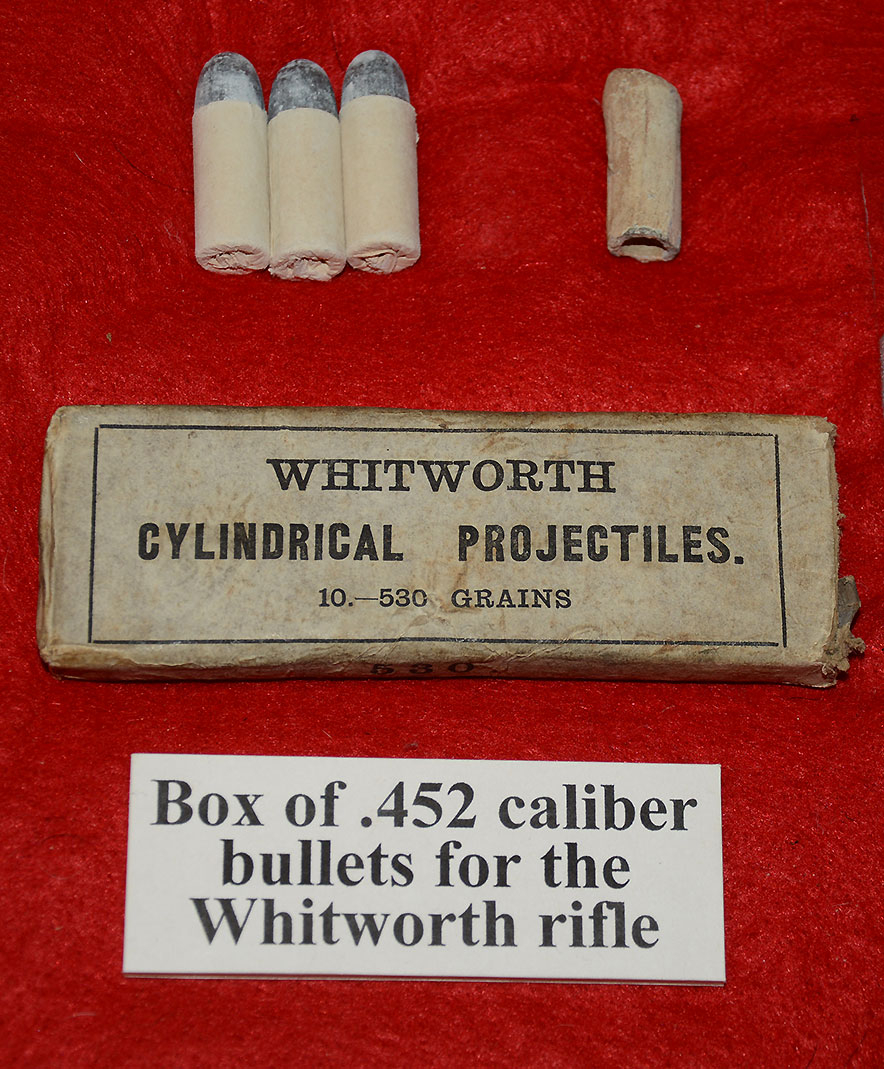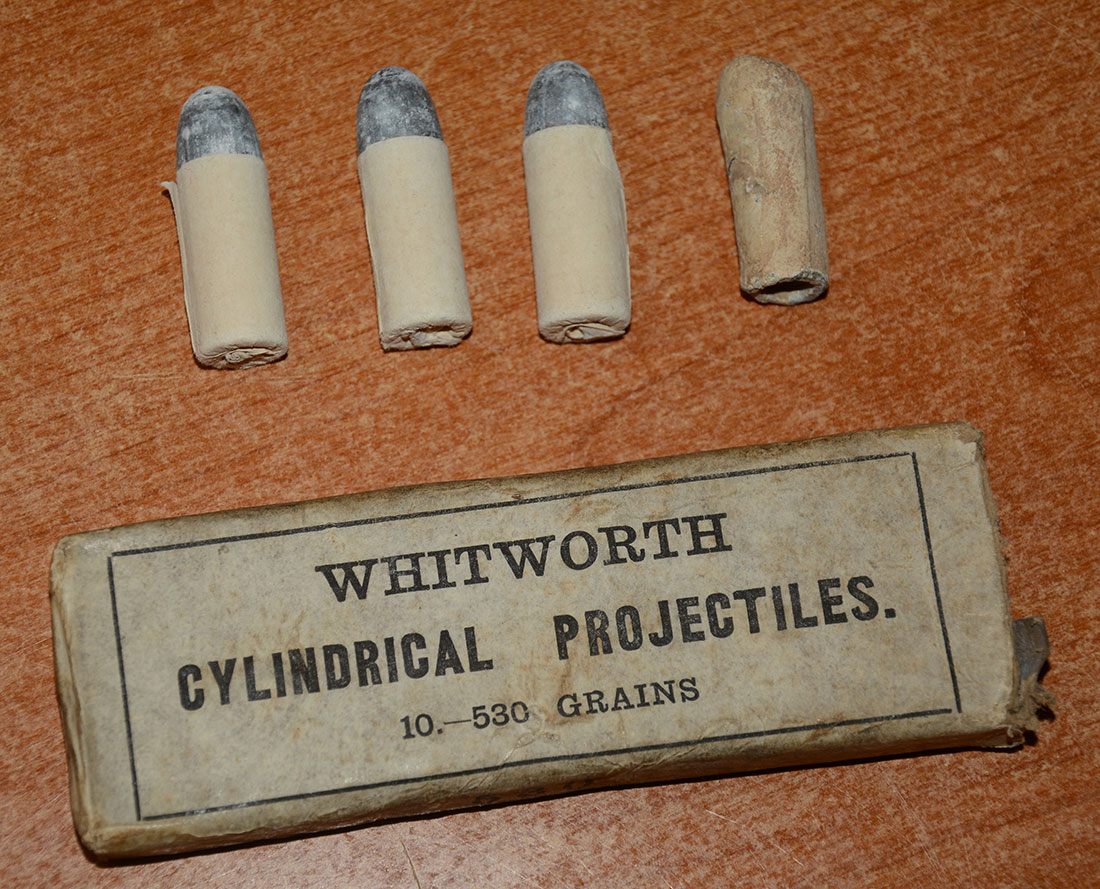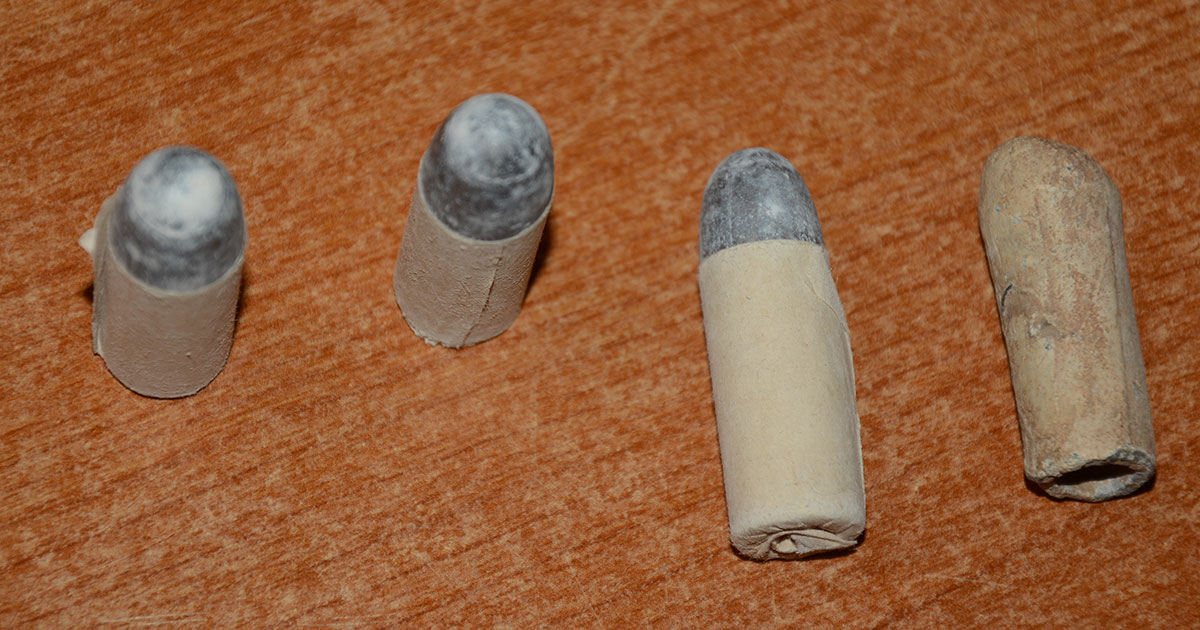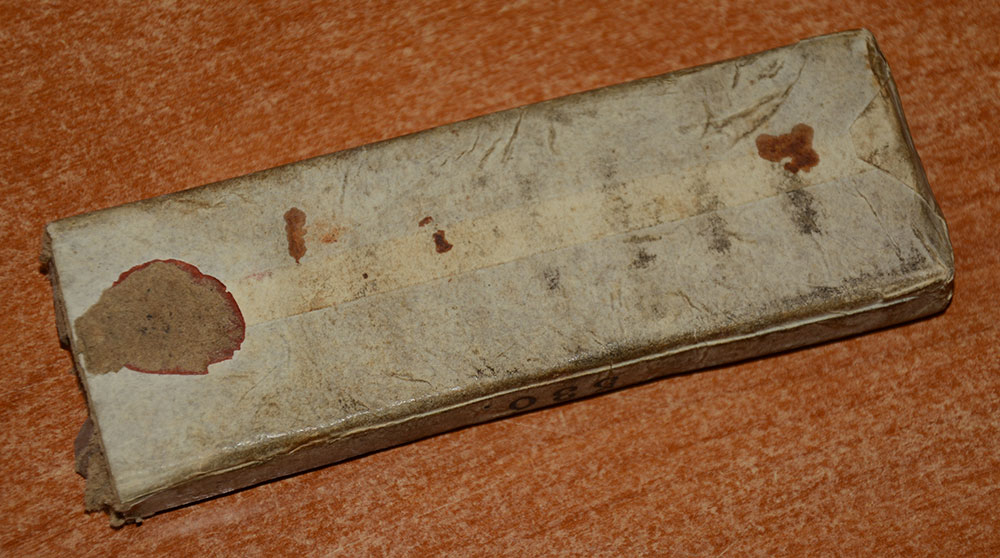site search
online catalog
SCARCE WHITWORTH PACKET, THREE PATCHED BULLETS, & “DUG” FIRED BULLET

Hover to zoom




$975.00
Quantity Available: 1
Item Code: 1268-101
Shipping: Determined by Method & Location of buyer
To Order:
Call 717-334-0347,
Fax 717-334-5016, or E-mail
Very rare box for ten patched Whitworth bullets, with three of the original bullets remaining, and a “dug” example of a fired bullet.
The Whitworth rifle, designed by Sir Joseph Whitworth, was a muzzle-loading rifle with a hexagonal bore and a reputation for exceptional accuracy, particularly at long ranges. It saw use by Confederate sharpshooters during the Civil War, claiming the lives of several Union generals, including Major General John Sedgwick, one of the highest-ranking Union officers killed during the Civil War, shot on 9 May 1864, at Spotsylvania.
The box is constructed of pasteboard with a printed pater wrapping. Printed on the front is “WHITWORTH / CYLINDRICAL PROJECTILES. / 10 – 530 GRAINS” with “530” printed on top and bottom edge. One end of package is open.
There are three remaining patched bullets from the package. Also included is an excavated specimen of this type of bullet. Being fired, the nose of the bullet is distorted and rifle grooves are visible along the length of the bullet.
This is a rare and very nice Whitworth lot. From the Texas Civil War Museum collection. [jet] [ph:L]
~~~~~~~~~~~~~~~~~~~~~~~~~~~~~~~~~~~
THIS ITEM, AS WITH ALL OTHER ITEMS AVAILABLE ON OUR WEB SITE,
MAY BE PURCHASED THROUGH OUR LAYAWAY PROGRAM.
CLICK HERE FOR OUR POLICIES AND TERMS.
THANK YOU!
Inquire About SCARCE WHITWORTH PACKET, THREE PATCHED BULLETS, & “DUG” FIRED BULLET
Most Popular
Historical Firearms Stolen From The National Civil War Museum In Harrisburg, Pa »
Theft From Gravesite Of Gen. John Reynolds »
Selection Of Unframed Prints By Don Troiani »
Fine Condition Brass Infantry Bugle Insignia »
British Imported, Confederate Used Bayonet »
Scarce New Model 1865 Sharps Still In Percussion Near Factory New »
featured item
RARE PACK OF CONFEDERATE, RICHMOND ARSENAL, ARTILLERY FRICTION PRIMERS
Offered here is a very rare, nice condition, original pack of artillery friction primers manufactured at the Richmond Arsenal in Virginia during the Civil War. These “primers” are what was placed in the cannon vent hole and attached to a lanyard… (1268-512). Learn More »


